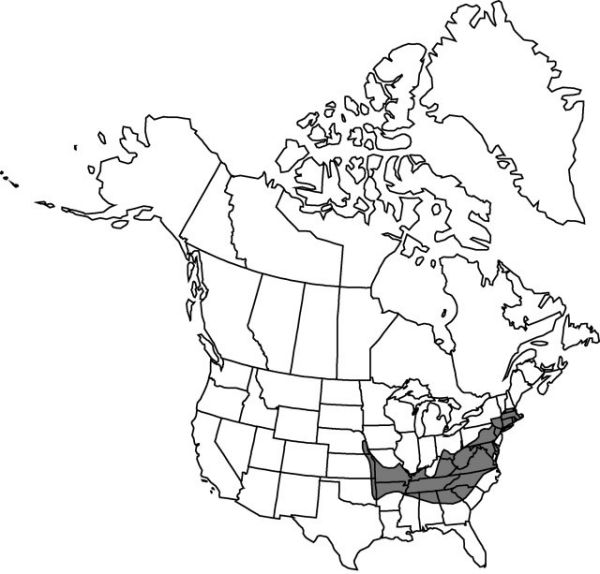familyOrchidaceae
subfamilyOrchidaceae subfam. Cypripedioideae
genusCypripedium
speciesCypripedium parviflorum
Cypripedium parviflorum var. parviflorum
Common names: Small yellow lady’s-slipper
Revision as of 04:19, 30 July 2020 by imported>Volume Importer
Bracts: abaxial surface of distalmost sheathing bract (and often the next) densely and conspicuously silvery-pubescent when young (later sometimes glabrescent). Leaves 4–5, rather evenly spaced along stem, alternate, spreading; blade orbiculate to lance-elliptic to ovate or obovate, 9–19 × 2.5–9 cm. Flowers 1–2, small, scent moderate to faint, rose or musty; sepals and petals usually minutely but densely spotted with reddish-brown or madder and appearing uniformly dark, rarely only coarsely spotted and blotched; lip oblance-ovoid to calceolate (slipper-shaped), 22–34 mm; orifice 12–19 mm.
Phenology: Flowering Apr–Jun.
Habitat: Mesic to dry deciduous and deciduous-hemlock forests, usually on slopes
Elevation: mostly 0–1200 m
Distribution

Ala., Ark., Conn., Del., Ga., Ill., Kans., Md., Mass., Mo., Nebr., N.J., N.Y., N.C., Ohio, Okla., R.I., Tenn., Va.
Discussion
Selected References
None.
Lower Taxa
None.
... more about "Cypripedium parviflorum var. parviflorum"
silvery-pubescent +
separating +
self-pollination +
indehiscent +
foliaceous +
large +
Small yellow lady’s-slipper +
sheathing +
absent +
symmetric +
resupinate +
epigynous +
faint +
1;2 +
bisexual +
moderate +
small +
ellipsoid;oblong-ellipsoid +
fleshy +
3-carpellate +
connate +
connate +
proximal +
spreading +
modified +
differing in form and color +
basal +
compound +
inferior +
anatropous +
numerous +
minute +
small +
dense +
flowering +
modified +
petaloid +
entire +
24mm;97mm +
oblong;lanceovate;undulate +
subdivided +
absent +
fertile +
reduced +
Trans. Linn. Soc. London +
1791 +
single +
creeping +
short;elongate +
spaced +
fleshy +
numerous +
distinct +
foliaceous +
longitudinal +
various +
racemose +
opposite +
adnate +
1;2 +
sheathing +
modified +
delicate +
proliferous +
free +
2-3-lobed +
absent +
adnate +
reddish spots +
Cypripedium parviflorum var. parviflorum +
Cypripedium parviflorum +
variety +
stolonoid +
multilayered +
spongy +
perennial +
subterranean +